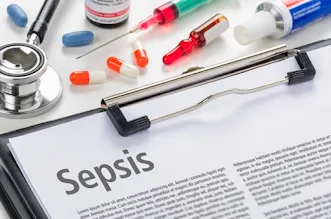What is Sepsis Infection? Criteria, Symptoms, Causes, and Treatment with Medications and Dosages
Sepsis is a life-threatening condition that arises when the body's response to an infection causes widespread inflammation, leading to tissue damage, organ failure, and potentially death. Understanding the criteria, symptoms, causes, and treatment options is crucial for early recognition and management.
Understanding Sepsis
Sepsis occurs when an infection triggers an overwhelming immune response, releasing chemicals into the bloodstream that cause systemic inflammation. This can lead to a cascade of changes that damage multiple organ systems, causing them to fail. If sepsis progresses to septic shock, blood pressure drops dramatically, and mortality rates increase significantly.
Sepsis Criteria
Sepsis is diagnosed based on a combination of clinical signs, laboratory results, and the presence of an infection. The criteria for diagnosing sepsis have evolved over time. The most recent criteria, known as Sepsis-3, include:
1. Suspected or Confirmed Infection
Sepsis begins with an infection, which could be bacterial, viral, fungal, or parasitic.
2. Organ Dysfunction
Sepsis is identified when there is a change in the Sequential Organ Failure Assessment (SOFA) score of 2 points or more due to the infection. The SOFA score assesses the function of six organ systems: respiratory, cardiovascular, hepatic, coagulation, renal, and neurological.
3. Septic Shock Criteria
Septic shock is a subset of sepsis with persistent hypotension requiring vasopressors to maintain a mean arterial pressure (MAP) of 65 mm Hg or higher and having a serum lactate level greater than 2 mmol/L despite adequate fluid resuscitation.
Symptoms of Sepsis
The symptoms of sepsis can vary depending on the underlying infection and the individual's overall health, but common symptoms include:
- Fever or Hypothermia: Elevated or unusually low body temperature.
- Rapid Heart Rate: Heart rate higher than 90 beats per minute.
- Rapid Breathing: More than 20 breaths per minute or a PaCO2 less than 32 mm Hg.
- Altered Mental State: Confusion, disorientation, or unconsciousness.
- Low Blood Pressure: Especially in severe cases, indicative of septic shock.
- Chills and Shivering
- Severe Pain or Discomfort
- Decreased Urine Output
Causes of Sepsis
Sepsis is most commonly triggered by bacterial infections but can also result from viral, fungal, or parasitic infections. Common sources of infection that can lead to sepsis include:
- Pneumonia: Lung infections.
- Urinary Tract Infections (UTIs): Especially in the elderly.
- Abdominal Infections: Such as appendicitis, peritonitis, or diverticulitis.
- Bloodstream Infections (Bacteremia)
- Skin Infections: Including cellulitis.
- Infected Wounds: Particularly surgical wounds.
Treatment of Sepsis
Treatment of sepsis is a medical emergency and typically involves hospitalization in an intensive care unit (ICU). The main goals are to stabilize the patient's condition, treat the underlying infection, and prevent organ damage.
1. Antibiotics
- First-Line Treatment: Broad-spectrum antibiotics are administered as soon as possible, ideally within the first hour of recognizing sepsis.
- Common Antibiotics:
- Ceftriaxone: 1-2 grams IV/IM once daily.
- Vancomycin: 15-20 mg/kg IV every 8-12 hours.
- Piperacillin-Tazobactam: 3.375-4.5 grams IV every 6 hours.
2. Intravenous Fluids
- Fluid Resuscitation: Rapid administration of IV fluids (30 ml/kg crystalloid) to maintain blood pressure and organ perfusion.
3. Vasopressors
- To Maintain Blood Pressure: If fluid resuscitation fails to stabilize blood pressure, vasopressors such as norepinephrine (initial dose of 0.01-3 mcg/kg/min) are administered.
4. Supportive Care
- Oxygen Therapy: To maintain adequate oxygen levels in the blood.
- Mechanical Ventilation: If the patient is unable to breathe adequately on their own.
- Dialysis: If the kidneys are failing.
5. Corticosteroids
- For Severe Sepsis: Low-dose corticosteroids like hydrocortisone (200 mg/day IV) may be used in cases of septic shock not responding to fluids and vasopressors.
Conclusion
Sepsis is a critical medical condition that requires immediate intervention. Early recognition of the symptoms and prompt treatment with antibiotics, fluids, and other supportive measures are essential to improving outcomes. Understanding the criteria and causes of sepsis can aid in early diagnosis, potentially saving lives.
Regular updates from authoritative sources like the CDC and WHO are recommended to stay informed about the latest treatment protocols and sepsis-related research.


